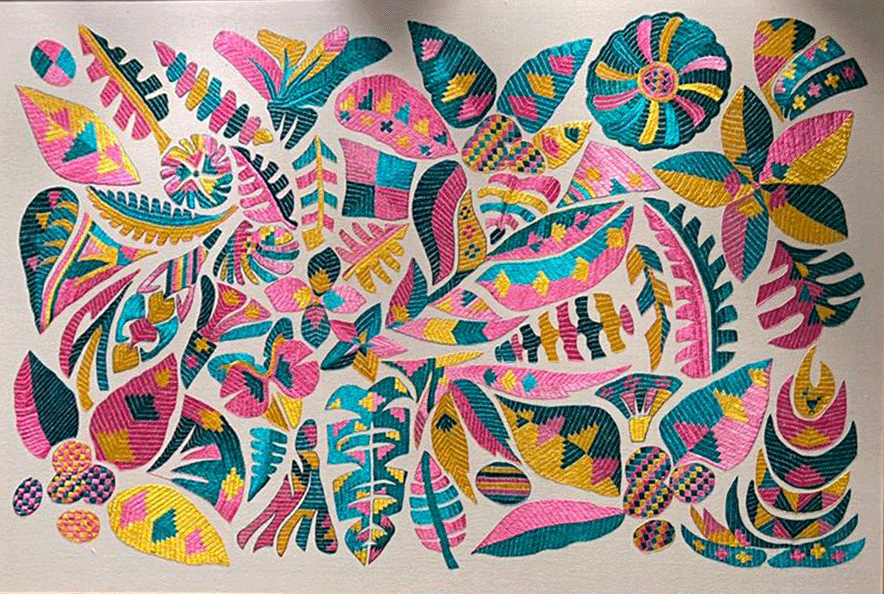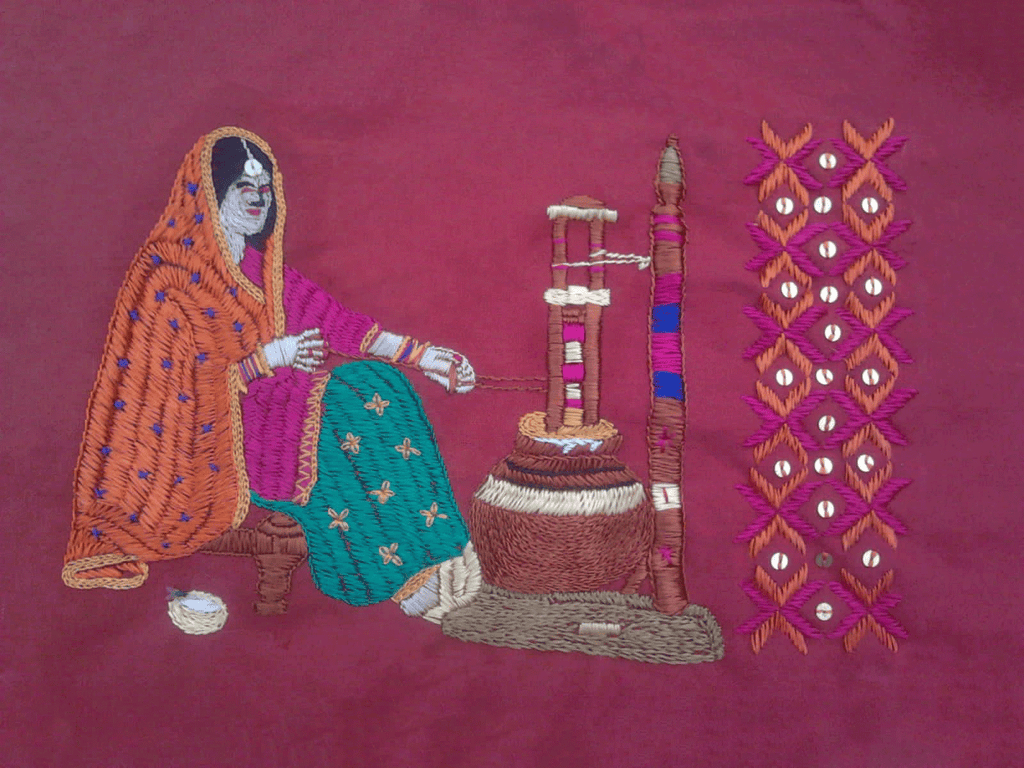“Ih phulkari meri maan ne kadhi, iss noo ghut ghut japhiyan paawan” – “My dear mother has embroidered this phulkari; I embrace it again and again with affection”.
Phulkari, which translates to ‘flower work,’ is a traditional form of hand embroidery belonging to the rural Punjab region of India. Though its name suggests floral work, Phulkari embroidery is not limited to flower designs but extends to several motifs, geometrical shapes, and patterns.
History and Legend
There are several theories about the origin of Phulkari. Historically, it was a community-based activity where women would gather to create embroidered fabrics for dowries, weddings, and other ceremonial occasions. It is believed that Phulkari at one time was practiced in various parts of the country but has only survived in Punjab. It has been mentioned in several Punjabi folklore and ancient texts like Waris Shah’s version of Heer Ranjha, Guru Granth Sahib, and many Punjabi folk songs.
Phulkari is deeply rooted in Punjabi culture and tradition. It was believed that domestic women created Phoolkari works according to the morality and character of the person and often had symbolic meanings in their creative expressions.
Technique and Details
Phulkari is typically crafted on a plain cotton or khadi base (called Khaddar), with the embroidery done using vibrant silk or cotton threads (called Pat). The technique involves creating intricate designs using mostly the darning style of stitch. Other stitches like the herringbone stitch, buttonhole stitch, and running stitch are also used based on the designs. The embroidery is done on the reverse side of the fabric, with its characteristic feature, as the pattern emerges on the front- the narrower the stitch, the finest the piece. The only tool used in this handicraft is the needle and the embroidery frame.
The motifs in Phulkari are diverse, inspired by immediate surroundings like flowers, animals, birds, belan (rolling pin), and moon to abstract geometric shapes. Each motif has its meaning and significance. The celebrated designs in Phulkari includes Thirma (symbol of purity, usually worn by elder women and widows), Darshan Dwar (an offering to thank god), Bawan Bagh (52 diverse patterns in Phulkari), Vari-da-bagh (gifted by in-laws to the new bride). It typically features a bold and vibrant palette, often with rich reds, oranges, yellows, and greens.
FAQs
Are the Phulkari items hand-embroidered?
Yes, all our Phulkari items are hand-embroidered by skilled artisans. Each piece is crafted with meticulous attention to detail, ensuring the authenticity and quality of the traditional embroidery.
Can I visit the MeMeraki store to see Phulkari items in person?
Currently, MeMeraki operates primarily online. However, we may host pop-up events or exhibitions where you can view our Phulkari collection in person. Please follow our website and social media channels for updates on any upcoming events.
What should I do if I have a specific question about a Phulkari item not covered in the FAQs?
If you have any specific questions or need further assistance, please contact our customer service team. We are happy to provide additional information and help with any inquiries you may have about our Phulkari collection.
Are there any special care instructions for preserving the vibrant colors of Phulkari embroidery?
To preserve the vibrant colors of Phulkari embroidery, avoid exposing the garments to direct sunlight for extended periods. Store items in a cool, dry place away from moisture and dust.
Show Less










